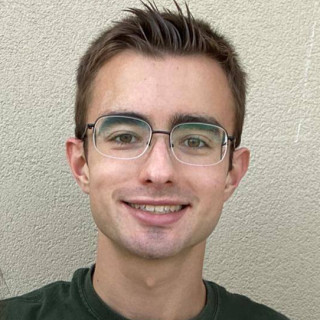I still remember receiving the call on that rainy Tuesday afternoon. I had been late to my job as a math tutor, and within five minutes of walking through the door I was surrounded by a group of rambunctious eight-year-olds. A phone call meant an escape from the chaos; it also potentially meant a new life path opening for me. As the hours went on, the downward glances I took toward my phone became more conspicuous. Then, my phone rang. I took the call, scurried over to the breakroom, and then shed a quick tear. I had received my first acceptance to medical school.
“Lachlan Shiver, MD.” The words rolled off my tongue on the drive home that day. In the moment, I could envision myself running to and fro patient rooms with a sense of purpose: prescribing medications, suturing small wounds, administering vaccines, and informing patients of their medical diagnoses with a comforting and warm demeanor. Through all my self-doubt, I had made it. I was on the road to a job whose mission was to help people.
The first two years of medical school really solidified this dream for me. Despite entering medical school during the throes of a pandemic, my optimism remained, largely spurred on by the scenery provided by my medical school’s brand-new high rise in our city’s downtown. The building meant a stronger relationship with our community’s safety net hospital and symbolized a brighter future for my school and the state of health care in my city. High ceilings, elegant staircases, panoramic windows, and beautiful views of the city sheltered me from the realities of illness.
Stepping into clinical rotations stripped away the ambience of a brand-new medical school. In its place was a safety-net hospital, one that proved significantly harder to romanticize. On my trauma surgery rotation, I learned what it was like to die from gunshot wounds in our trauma bay. On my psychiatry rotation, I came to understand just how severe the opioid epidemic had become. On my internal medicine rotation, I saw the toll incurable malignancy takes on families. And on my pediatrics rotation, I realized just how blind I was to the extent of child abuse taking place today. Third year was an inflection point, a time when I came to understand the darkness that physicians must navigate.
Preclinical curriculum teaches an idealistic form of medicine, where there are rights and wrongs. Each test question has only one answer, and we look for the “best” disease, diagnostic test, and treatment. During third year, this idealistic form of medicine meets reality. What we pick on exams, we can’t pick in real life. Medication shortages and insurance denials prevent the use of first-line medications. Imaging studies are delayed or omitted because patients can’t afford them. People are turned away from the ER because there is no payer for the hospital stay. Screening tests are deferred until patients develop metastatic cancer. Chronic conditions go untreated because people don’t have access to a physician. Our ability to change patient outcomes is controlled just as much by the society around us as it is by us.
If the third year of medical school was the inflection point for me, then the fourth year of medical school was the reflection point. STEP exams and arduous NBME exams were in the rearview mirror, and I had time off to interview and mentally prepare for residency. During this time, I realized the limits of the preclinical curriculum. It may be able to prepare you for the tangibles in medicine, like assessing fluid status in children, but it will never prepare you for the breadth of human emotion you’ll experience within the hospital’s four walls.
The U.S. health care system I’ll have to navigate as a resident physician will be the same system I experienced as a third-year student. However, I realized during residency interviews that we still have a voice in deciding how we want to practice medicine. On my search, I found programs at for-profit institutions, non-profit institutions, veterans affairs hospitals, and safety-net hospitals. I interviewed at a residency that served a population within a prison, a residency with an expansive refugee clinic, and a residency located in a county with an extremely comprehensive financial assistance program. Each hospital navigates health care differently. Our system isn’t going to radically change anytime soon, but I take comfort in knowing that the Match gives us a chance to say, “This is the place where I think I can best help patients.”
How have your views on medicine changed? Share in the comments.
Lachlan is a fourth-year medical student attending the USF Morsani College of Medicine. His interests include neurological research, medical humanities, and running. He was a 2022–2023 Doximity Op-Med Fellow, and continues as a 2023–2024 Doximity Op-Med Fellow.
Image by z_wei / Getty







